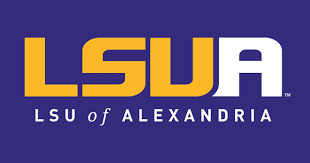Practice Area Insights: How to Break Into an Environmental Law Practice was originally published on Firsthand.
Environmental law can differ greatly depending on an attorney’s client base; one can work for a public interest group or firm to fight to preserve the environment or can represent companies to navigate environmental regulations. On either side, the practice heavily involves regulations and laws at the national, state, and local level. Practitioners in this area should be comfortable with science and politics, which both heavily influence the practice. Environmental lawyers for public interest groups can work long hours for little pay and feel they are always fighting deeper pockets. Lawyers representing companies can feel frustrated by the regulations that prevent commercial activity. In large firms, many real estate, energy, and project finance lawyers will deal with environmental regulations in their deals, and litigators representing companies in these sectors will also deal with environmental issues. Environmental lawyers may handle air quality, chemicals regulation, California’s environmental standards, contamination, hazardous materials, insurance, natural resources, mining, occupational safety and health, Superfund, sustainability, toxic torts, water, wildlife protection, and more.
In our guide, Practice Perspectives: Vault’s Guide to Legal Practice Areas, attorneys from law firms with top-ranked Environmental practices share insights about their practice, including what types of cases & deals they work on and what kind of training they recommend to excel at their field of law. Keep reading for their insights!
What types of cases/deals do you work on?
Megan Morgan, Principal—Beveridge & Diamond: In my litigation practice, I am litigating an issue of just compensation for the taking of private property, defending multiple citizen suits brought under federal environmental statutes, defending against tort claims, and challenging the issuance of a permit with certain onerous and illegal permit conditions. In my ESG practice, I am advising clients on emerging human rights issues and developing their risk assessment and internal processes with respect to such issues, and preparing mandatory disclosure statements related to such processes.
Jenny Leech, Associate—Beveridge & Diamond: I frequently negotiate licensing, pre-clinical, and clinical arrangements with major research institutions, including: Dana-Farber Cancer Institute, Duke University, Fred Hutchinson Cancer Research Center, MD Anderson, various campuses of the University of California, and Yale University. I recently negotiated research and collaboration arrangements to enable the creation of new therapies for patients with cancer and exclusive in-licenses to develop and commercialize technologies for treating certain diseases with major research institutions and/or large U.S. and international companies. I also help clients draft website policies and structure and negotiate technology transfer, supply, and manufacturing and distribution agreements.
What training, classes, experience, or skills development would you recommend to someone who wishes to enter your practice area?
Megan Morgan: Legal writing and research skills are crucial to success either as a litigator and regulatory lawyer. I would focus on the underlying legal skills, like writing and research, and the basic classes like Civil Procedure, Evidence, Corporations, and Administrative Law. A demonstrated interest in environmental law is important for B&D, but this is a specialty that you will develop over the course of your career. You need to start by demonstrating a mastery of the basics.
Jenny Leech: For classes, I recommend focusing on Administrative Law, Civil Procedure, Corporations, Contracts, and an Environmental Survey seminar. For skill development, I recommend getting as much experience as possible in written and oral communication. This experience can be gained through joining a law school journal, such as Law Review, participating on a Moot Court team, serving as a judicial law clerk, or becoming a law school student legal writing assistant instructor.
How do you balance the different hats (from litigation to transactional work to regulatory matters) that an environmental lawyer must wear?
Megan Morgan and Jenny Leech: There is a crossover between environmental litigation and regulatory counseling, where an attorney working on both the litigation and regulatory sides of environmental law does not necessarily wear one “hat” at a time. We approach matters by litigating through the lens of regulatory work, and similarly, provide regulatory counseling through the lens of potential litigation risk.
We often advise on “pre-litigation” phases where there is some sort of incident and we are trying to avoid an enforcement action or litigation altogether. Here, litigation experience is crucial for understanding and evaluating litigation risk. The same is true with work on regulatory advice and emerging issues: we are constantly thinking about the possibility of litigation and preparing the client as best we can to protect their work product from discovery. We enjoy having a mixture of work. For example, after a long day of drafting a motion to dismiss, it can be enjoyable to switch gears and address a very specific question on the UK Modern Slavery Act.




